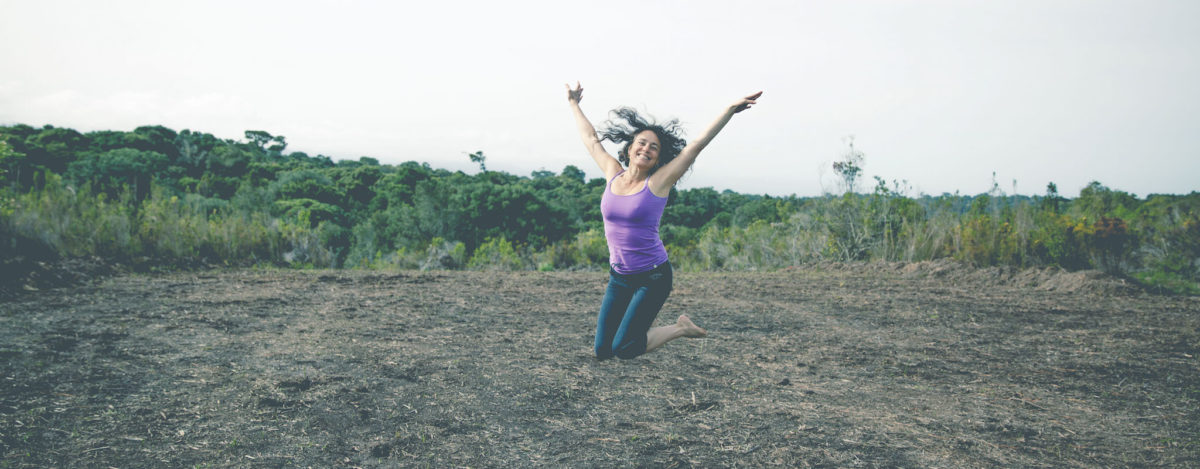Guilty As Charged
There is a feeling I used to have when I was about 15. Back then I wasn’t old enough to understand what it was. All I knew was that when I had it, I felt awful. Like something about me wasn’t quite right and there was nothing anyone could do to fix it. It happened when I looked at myself in the mirror and just after I’d eaten. My body was wrong and I was wrong too.
Being a dancer and attending a performing arts boarding school exclusively for girls was no picnic. We were supposed to be disciplined, artful and focused. The goal was to excel. Some of us were being groomed for major dance companies. I was desperate to be one of those girls but my feet didn’t point, I was thick around the middle and my legs wouldn’t extend high enough.
Desperate times call for desperate measures. I decided that the only way to fit the mold was to push my body into submission. The option? Starve myself.
For me, having an eating disorder was short lived. There was only so long that I could live on two to three lettuce leaves a day. But there was something that stayed as a hangover from that time.
Guilt about food.
As an adult pregnancy changed my perspective. I had to accept that the only way I could grow a healthy baby was to let myself fill out. As much as I was challenged by morning sickness and a feeling that my body wasn’t my own, I also felt my self letting go in a way I never could before.
And then 16 years later I was diagnosed with type 1 diabetes.

My body had failed me and this time it wasn’t about the shape of my feet. It was about an organ I couldn’t even see or feel. It was frustrating and I felt helpless. As I tried to gain control of the disease I found myself sliding backwards. Rekindling the habit of using food as a measure of control and feeling guilty when I couldn’t make it work. Knowing about diabetes, and understanding what it means to live with diabetes are two different things.
I made two wrong assumptions right off the bat.
- I assumed that my yoga practice, healthy living and changing my diet would be a cure-all because I refused to believe that I had type 1 diabetes.
- That isolating myself and acting “normal” would make everything go away.
Of course neither of these strategies worked. My yoga practice was useful in that it helped me stay calm but it didn’t affect the upward trend on my glucometer and acting normal only served to make me feel more abnormal. And amping up my food restrictions sent me into a nosedive that I’m still recovering from.
And the worst part? Every time I looked at my meter and saw a high number I felt guilty and caught myself blaming the food, my discipline and my body for not getting it right.
It’s been frustrating to feel like this knowing full well it’s not my fault and that the guilt I feel when I look at my glucometer is actually habitual. In my experience guilt is a conditioned response to a story made up about something that isn’t even real (unless you’ve genuinely done something consciously to hurt yourself or another person).
I mean, who told any of us to feel ashamed? Or that something about our bodies isn’t right? Every single person makes a choice when they react to any given situation. When something happens it’s up to me whether I respond or react.
As a 15-year-old surrounded by beautiful slim, long-legged flexible ballerinas I made the choice to tell myself I was wrong. I could have decided to focus on my gifts, like my ability to move like liquid or to connect with an audience on stage. But because I didn’t, I’ve had to work even harder to learn to accept the things that I can’t control.
And that’s where my passion for yoga kicks in.
When I consciously observe my breath in even the simplest of breathing practices, my mind is quite naturally drawn out of its need to identify with difficult feelings like guilt, shame and frustration. It doesn’t mean that those feelings aren’t there or that I deny them its just that I extend out to the bigger picture and relax. Feelings, like thoughts are always in a state of flux. Think about it; if you try to hang onto a feeling for any given period of time it usually passes away. It’s the same with our thoughts. Try and catch a thought. That’s a pretty tall order.
What I’ve come to understand through reaching out and sharing with other people living with type 1 diabetes is that there is no shame in a perceived failure in daily diabetes management. Trying to mimic the work of a pancreas is near impossible. We can work on our diet, exercise, manage stress and still our A1c doesn’t come out perfect.
As a person who lived a “normal” life up to the age of 42 and whose struggled with body image and food from a young age. I’ve come to the conclusion that living with diabetes has changed my life for the better. Rather than yo-yo-ing with my diet I’ve had to be consistent, accountable and moderate. Instead of beating myself up, I’ve had to recognize the role self imposed stress plays in raising my blood sugar levels. And on the deepest level instead of constantly thinking I should be some better version of myself, it’s forced me to accept myself exactly as I am.
Read more from Rachel Zinman-Jeanes: The 5 Go-to Yoga Practices that Saved My Life and M is for Meditation.





